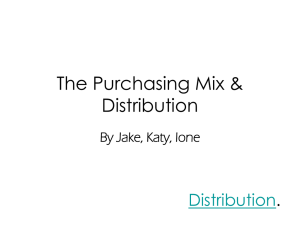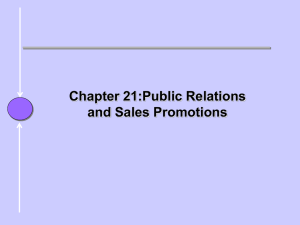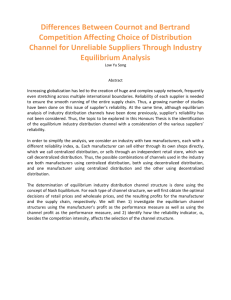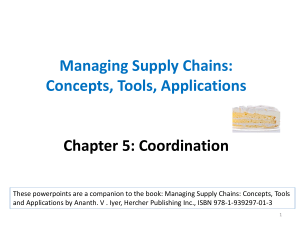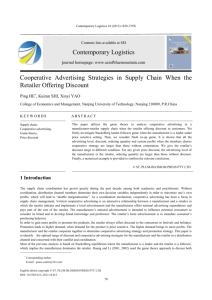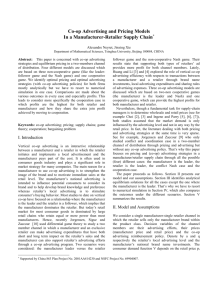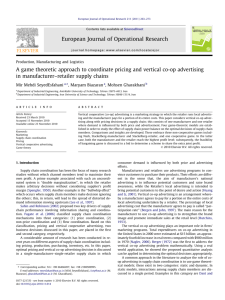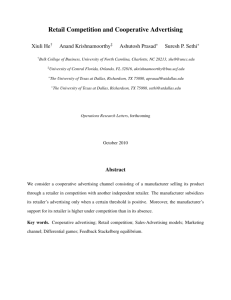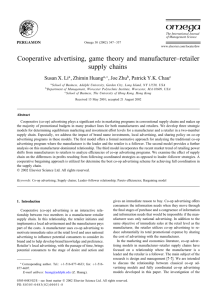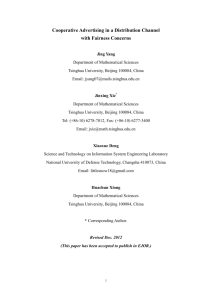Revenue Sharing in Advertising
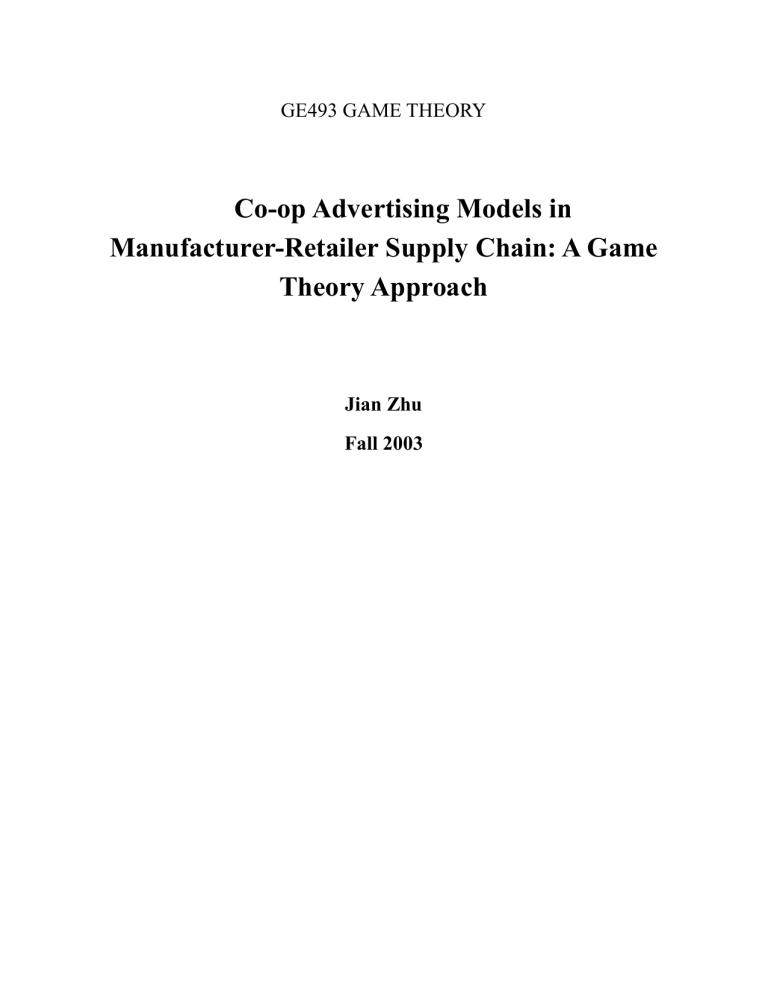
GE493 GAME THEORY
Co-op Advertising Models in
Manufacturer-Retailer Supply Chain: A Game
Theory Approach
Jian Zhu
Fall 2003
Agenda
1.
Model Description
2.
Stackelberg Equilibrium
3.
Nash Equilibrium
4.
Coordinated Co-op Advertising
5.
Conclusion
1. Model Description
1.1
Co-op Advertising
The manufacturer invests in national advertising to develop brand knowledge and preference.
The retailer initiates and implements a local advertisement to stimulate immediate sales.
The manufacturer pays part of the costs of local advertising.
Table 1 Model Parameters and Decision Variables
S a q
Retailer’s sales volume
Retailer’s local advertising effort
Manufacturer’s national brand name investment
Sales saturate asymptote
Environmental uncertainty
,
,
Positive constants
m
Manufacturer’s dollar marginal profit for each unit to be sold
r t
Retailer’s dollar marginal profit
Fraction of total local advertising expenditures which the manufacturer agree to share with the retailer
1. Model Description (continued)
1.2
Assumptions
Both the manufacturer’s brand name investment and the retailer’s local advertising have positive effects on product sales.
The manufacturer’s and the retailer’s dollar marginal profits for each sold unit are known and constant.
Consider only one-period sales.
One-period sales volume function:
(1)
The manufacturer’s, the retailer’s and the system’s expected profits:
(2), (3), (4)
However, in practice, the manufacturer’s profit is determined by the quantity of the retailer’s order instead of the sales. A more appropriate model should consider this fact.
2. Stackelberg Equilibrium
The Manufacturer, as the leader, first declares the level of brand name investments and the co-op advertising policy.
The retailer, as the follower, then decides the total local advertising expenditures.
In order to determine Stackelberg equilibrium, first solve the retailer’s problem.
(5)
Next, substitute (5) into (2) and get the equilibrium:
(6), (7), (8)
The manufacturer offer positive advertising allowance to the retailer if m
r
1
; otherwise he will offer nothing.
The fraction that the manufacturer is willing to share is increasing with its unit profit and decreasing with the retailer’s unit profit.
3. Nash Equilibrium
As its influence on product differentiation increase, the retailer’s power relative to the manufacturer increases.
The leader-follower relationship is relaxed and the manufacturer and the retailer simultaneously maximize their own profits without coordination.
It is not hard to find the Nash equilibrium by simultaneously solving the first order conditions for Equation (2) and (3):
(9), (10), (11)
Note that the manufacturer is not willing to share any portion of local advertising cost no matter the parameters are.
Compare the results of Nash equilibrium with those of
Stackelberg equilibrium, the manufacturer always prefers the leader-follower structure, and the retailer prefers the simultaneous move game if r
m
r
m
1 .
4. Coordinated Co-op Advertising
In this section, the paper focuses on maximizing the entire system’s profit.
A scheme is Pareto efficient if the scheme cannot be reorganized to increase the profit of one party without decreasing the profit of the other. The collection of Pareto efficient schemes can be described by the set:
(12) where , and
In this problem, the system profit is maximized if and only if the co-op advertising scheme is Pareto efficient.
Assuming r
m
r
m
1
, and define
Then under any scheme within , both the manufacturer and the retailer are better off than non-coordinated games.
To ensure that both parties would obey the Pareto efficient schemes, some strategy-proof mechanisms must be developed.
5. Further Research
The problem can be extended to a multi-period game.
Varying profits and sales-dependent promotion cost.
Single-manufacturer and multi-retailer structure.
Q&A

